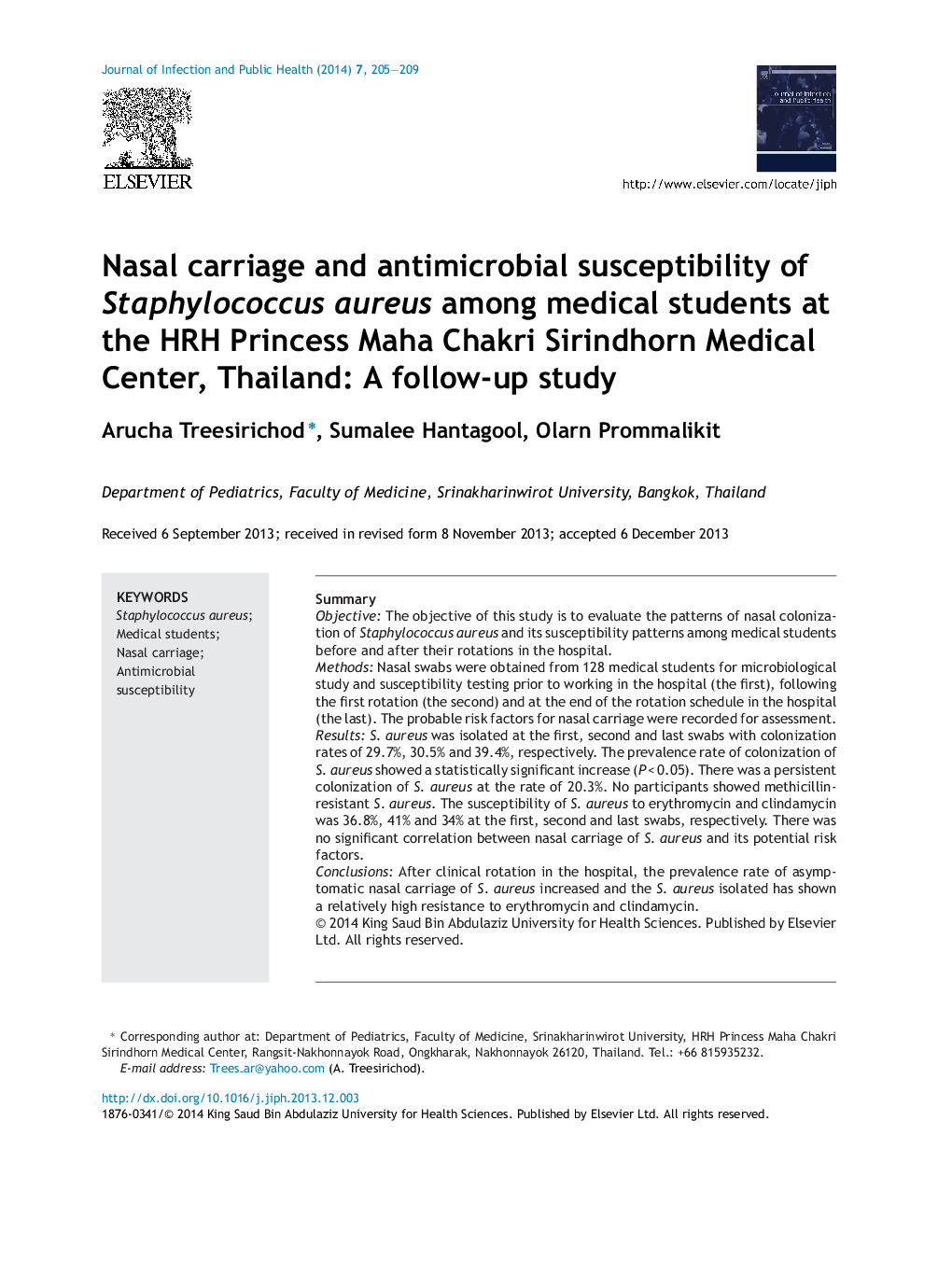| Article ID | Journal | Published Year | Pages | File Type |
|---|---|---|---|---|
| 3405942 | Journal of Infection and Public Health | 2014 | 5 Pages |
SummaryObjectiveThe objective of this study is to evaluate the patterns of nasal colonization of Staphylococcus aureus and its susceptibility patterns among medical students before and after their rotations in the hospital.MethodsNasal swabs were obtained from 128 medical students for microbiological study and susceptibility testing prior to working in the hospital (the first), following the first rotation (the second) and at the end of the rotation schedule in the hospital (the last). The probable risk factors for nasal carriage were recorded for assessment.ResultsS. aureus was isolated at the first, second and last swabs with colonization rates of 29.7%, 30.5% and 39.4%, respectively. The prevalence rate of colonization of S. aureus showed a statistically significant increase (P < 0.05). There was a persistent colonization of S. aureus at the rate of 20.3%. No participants showed methicillin-resistant S. aureus. The susceptibility of S. aureus to erythromycin and clindamycin was 36.8%, 41% and 34% at the first, second and last swabs, respectively. There was no significant correlation between nasal carriage of S. aureus and its potential risk factors.ConclusionsAfter clinical rotation in the hospital, the prevalence rate of asymptomatic nasal carriage of S. aureus increased and the S. aureus isolated has shown a relatively high resistance to erythromycin and clindamycin.
